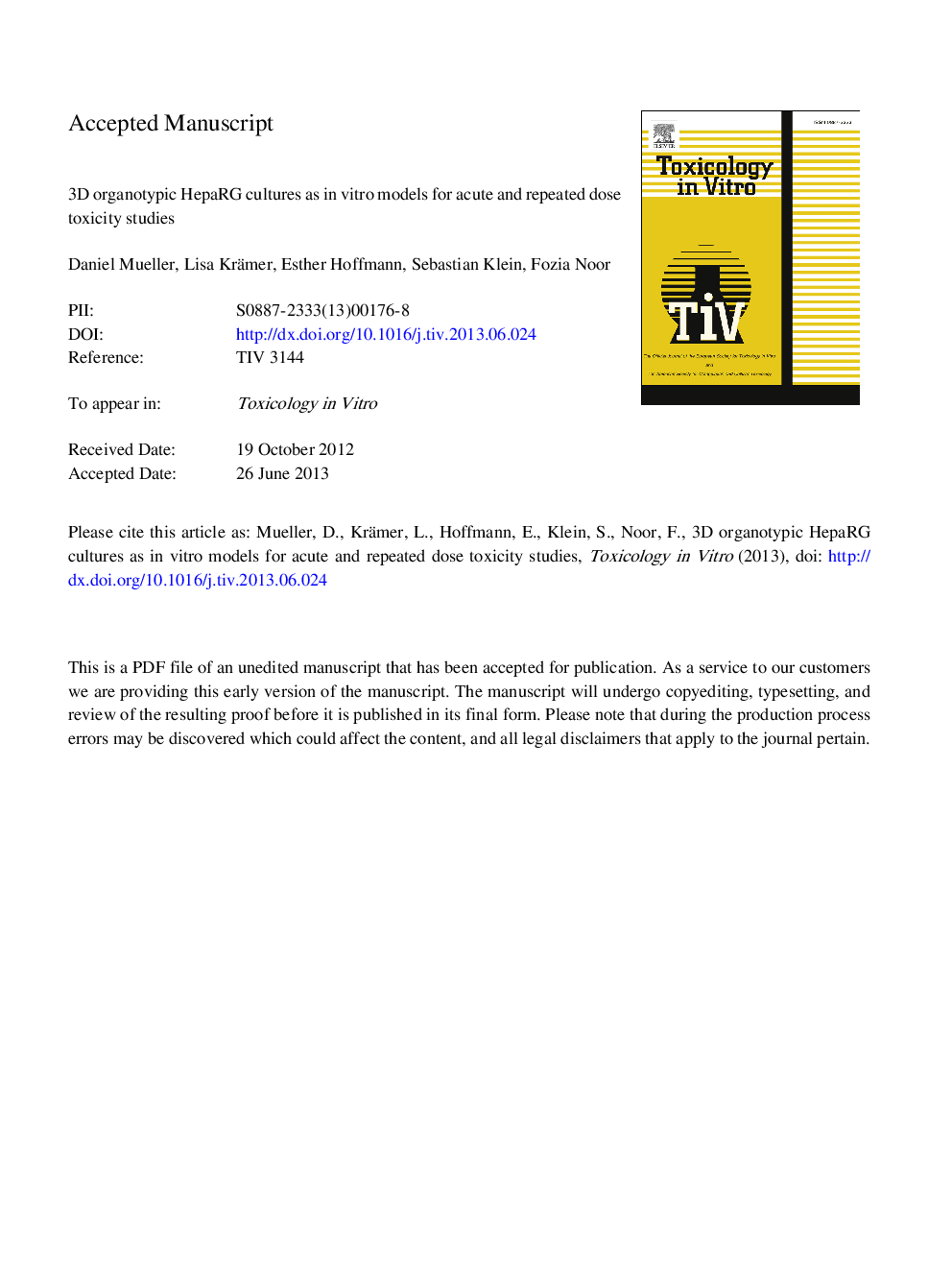| Article ID | Journal | Published Year | Pages | File Type |
|---|---|---|---|---|
| 5862007 | Toxicology in Vitro | 2014 | 34 Pages |
Abstract
Predictive in vitro models alternative to in vivo animal will have a significant impact in toxicology. Conventional 2D models do not reflect the complexity of a 3D organ resulting in discrepancies between experimental in vitro and in vivo data. Using 3D HepaRG organotypic cultures we tested four drugs (aflatoxin B1, amiodarone, valproic acid and chlorpromazine) for toxic effects and compared the results with 2D HepaRG and HepG2 cultures. We show that 3D HepaRG cultures are more sensitive than the other tested cultures to aflatoxin B1 which is only toxic upon metabolic activation in the liver. We observed that CYP3A4 activity is higher in the 3D HepaRG cultures compared to the 2D HepaRG cultures. Furthermore, we investigated repeated dose toxicity of chlorpromazine and assessed its effects on glucose and lactate metabolism. Sub-toxic concentrations of chlorpromazine induced significant metabolic changes in both 2D and 3D HepaRG cultures upon acute and repeated dose (3 doses) exposure. In summary, our data support the hypothesis that 3D cell culture models better mimic the in vivo tissue and improve cellular functionality. The 3D HepaRG organotypic cultures represent a high throughput system for drug toxicity screening. This system is therefore a promising tool in preclinical testing of human relevance which can allow reducing and/or replacing animal testing for drug adverse effects.
Related Topics
Life Sciences
Environmental Science
Health, Toxicology and Mutagenesis
Authors
Daniel Mueller, Lisa Krämer, Esther Hoffmann, Sebastian Klein, Fozia Noor,
